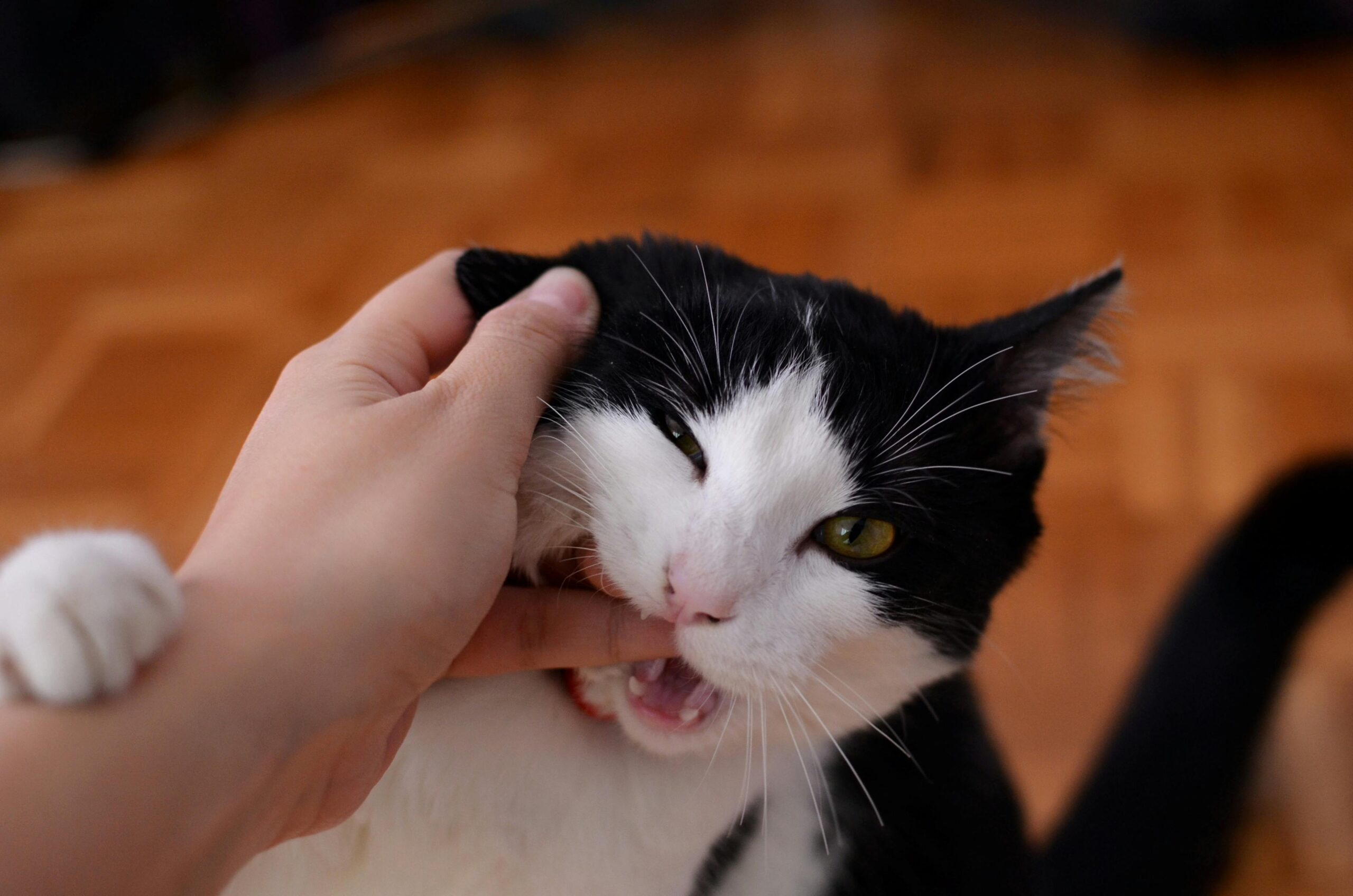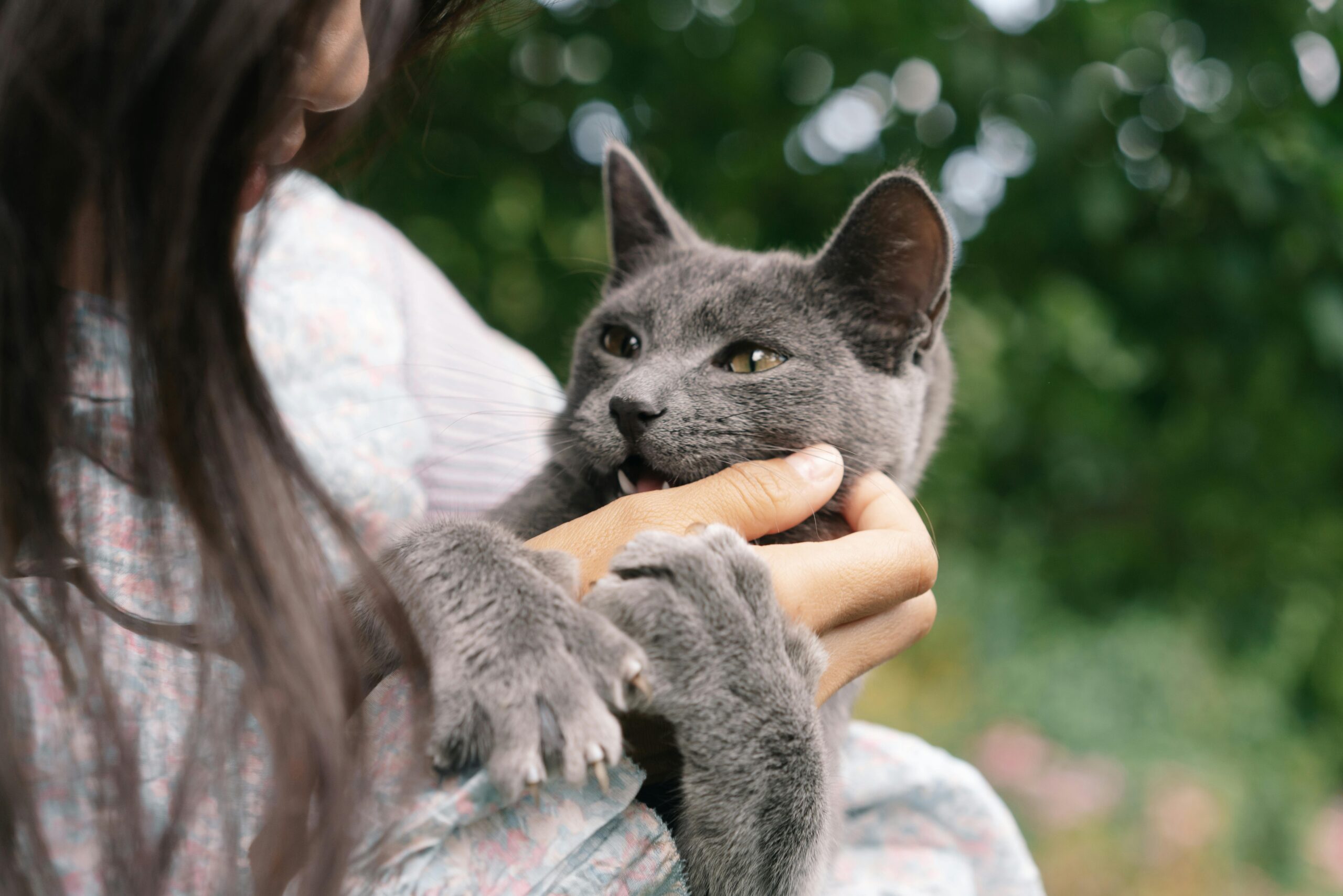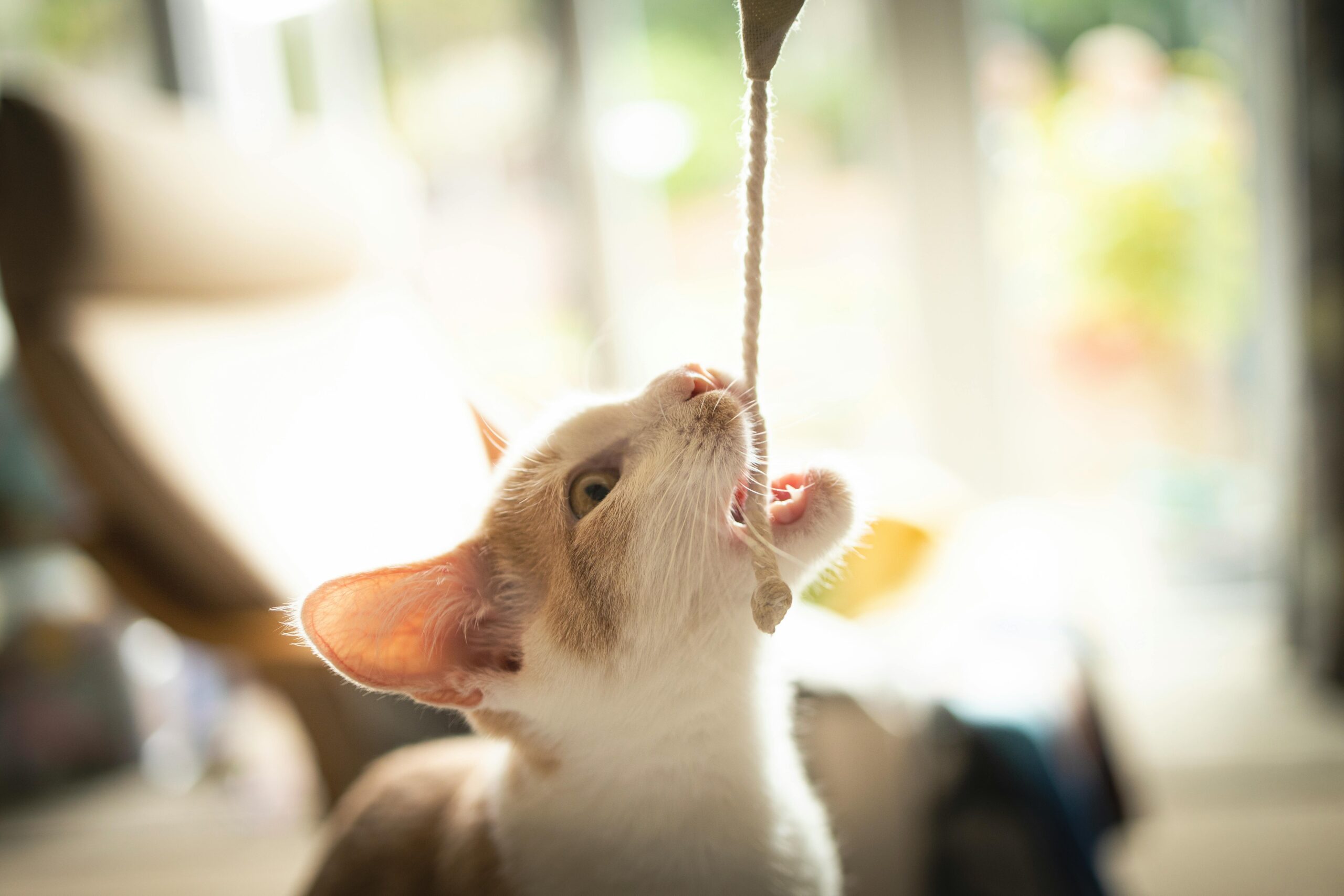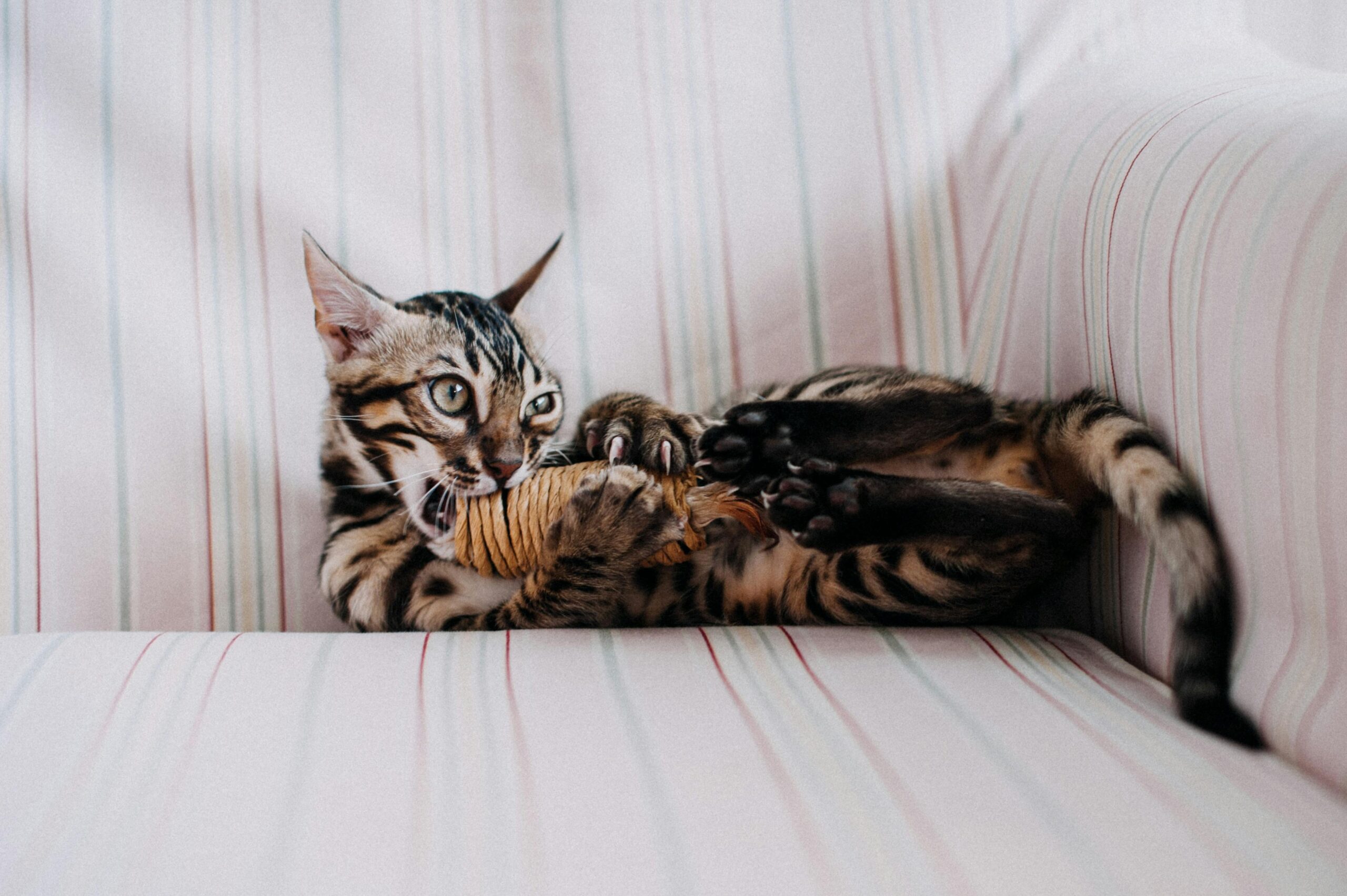With their enigmatic personalities and unpredictable behavior, cats often leave their owners scratching their heads – and sometimes, their skin. For those moments when your furry friend’s playful nibbles escalate into something sharper, understanding the perplexing phenomenon is essential. In this comprehensive guide, we will unravel the mysteries behind feline biting tendencies and give you the insights and strategies needed to foster a harmonious relationship with your feline companion.
Introduction: Deciphering the Cat Bite Conundrum
The sudden nip or bite from your cat can be perplexing, prompting pet owners to seek solutions beyond typical “cat anti-bite hacks.” Cats use biting for communication, conveying playfulness, warnings, or discomfort. Territorial instincts may trigger biting, emphasizing the need to identify and address such triggers. Incomplete socialization during kittenhood can lead to inappropriate biting, which is mitigated by providing suitable play outlets. Pain or discomfort may also prompt biting, necessitating regular veterinary check-ups. Overstimulation during play or petting and fear or anxiety are additional factors. Collaborating with behaviorists is crucial to deciphering cat biting and fostering a happier feline-human relationship.
Understanding Cat Behavior: More Than Meets the Eye
Understanding your cat’s biting behavior requires delving into the intricate nature of feline instincts. Unlike dogs, cats are not pack animals, and their solitary tendencies are deeply rooted in millions of years of evolution.
Cats, as independent creatures, express themselves uniquely. Biting is a form of communication that signals various messages. Playful bites, warnings, or expressions of discomfort all carry distinct meanings. Territorial instincts play a significant role, and identifying triggers is vital for a secure environment. Incomplete socialization during kittenhood may lead to inappropriate biting.
Regular veterinary check-ups are crucial to rule out pain or discomfort as a cause. Recognizing signs of overstimulation and addressing fear or anxiety contribute to a holistic understanding of cat biting. Collaborating with behaviorists enhances the bond, unraveling the complexities of feline behavior.
Instinctual Behavior of Cats
Cats are driven by instincts honed by their ancestors’ need to hunt and survive. These instincts manifest in various ways, including needing to stalk, pounce, and bite. While this behavior looks aggressive, from your cat’s perspective, it’s simply fulfilling an inborn drive.
Communication Through Biting
Biting is a multifaceted communication tool for cats. It can mean anything from establishing boundaries to expressing affection. A cat’s bite force isn’t always a measure of aggression – it can be a sign of many emotions, most of which you can decode by reading their other body language cues.
Reasons for Biting: Fear, Playfulness, Stress, or Aggression
Fear can lead to defensive bites, typically sharp and sudden, to ward off perceived threats. Playful bites are gentler, part of your cat’s attempt to engage you in their games. Stress and aggression can also be triggers, with biting serving as a self-protective or dominant response.
Types of Cat Bites: A Spectrum of Intent
In deciphering cat bites, it’s crucial to recognize their diverse purposes, ranging from mild curiosity to outright hostility. Cat bites serve as a form of communication, with distinct meanings tied to various contexts. Understanding this spectrum is essential for fostering a deeper connection with your feline companion.
Cats communicate through bites, expressing curiosity, playfulness, or even discomfort. Mild nibbles indicate curiosity or a desire for attention, while aggressive bites may signal displeasure or fear. Recognizing these nuances helps decipher your cat’s emotional state and promotes a harmonious relationship. Regular veterinary check-ups and collaboration with behaviorists enhance understanding, ensuring a more enriching bond with your feline friend.
Investigative Bites
Curiosity may have killed the cat, but biting is usually not meant to cause harm. Investigative bites often test nibbles as your cat explores its environment using all its senses, including touch.
Playful Bites
During playtime, your cat may nip or bite while keeping its claws sheathed. This behavior mimics hunting tactics and allows cats to hone their skills through interactive play with their human counterparts.
Fearful or Defensive Bites
If your cat feels cornered or threatened, they may bite defensively. Dilated pupils and a hunched posture typically accompany these bites – clear signs of a scared or stressed feline.
Aggressive Bites
The most alarming kind of biting is aggression-related. This kind of biting is often unprovoked and may result from an overstimulated cat reacting with a bite as a form of release.
How to Address Cat Biting: Understanding the Triggers
Identifying the triggers behind your cat’s biting behavior is the initial step toward resolution. Understanding the reasons—whether rooted in playfulness, discomfort, or other factors—enables the development of a customized approach to addressing the issue. Based on recognizing the specific context and motivation for the biting, this tailored approach facilitates a more effective and compassionate resolution to this common feline behavior.
Recognizing Warning Signs
Every cat has its unique set of behaviors that precede a bite. Recognizing these signals, such as tail twitching or ear flattening, can help you avoid a bite with timely intervention.
Redirecting Behavior
Redirecting unwanted biting behavior toward acceptable targets, such as toys, can be an effective technique. It saves your skin and channels your cat’s energy in a more constructive direction.
Training and Socialization Tips
Early socialization and positive reinforcement training go a long way. These practices can teach your cat appropriate limits and help them understand when it’s okay to play – and when the playtime’s over.
Seeking Professional Help If Needed
Professional assistance is the best route in some cases, particularly when dealing with deeply ingrained behavioral issues or when the biting is a reaction to pain. Trained behaviorists can give you and your cat the tools to work through these challenges.
Preventive Measures: Fortifying Against Feline Fangs
Preventing cat bites is more effective than treating them, emphasizing the importance of creating a proactive environment. By taking measures to discourage biting, such as understanding feline behavior, providing suitable outlets for play, and recognizing stressors, you can significantly minimize the occurrence of this behavior. Proactive prevention involves fostering a positive atmosphere that aligns with your cat’s instincts, ensuring a safer and more harmonious relationship.
Providing Enrichment and Stimulation
A bored cat is likelier to engage in negative behaviors such as biting. Ensuring your cat has plenty of toys, scratching posts, and interactive play sessions keeps them mentally and physically stimulated, leading to a contented, bite-free kitty.
Creating a Safe Environment
A serene environment where your cat feels secure is key. Offer hiding spots, vertical space, and a predictable routine for your feline friend to minimize stress triggers that can lead to biting.
Regular Vet Check-ups
If biting behavior suddenly escalates or you notice any unusual signs, a visit to the vet is warranted. Cats often hide signs of illness, and biting can be their way of communicating pain or discomfort.
Conclusion: The Path to a Bite-Free Friendship
Understanding the complex motivations behind your cat’s biting can lead to a deeper, more meaningful bond. By recognizing the various triggers and types of biting, addressing them with patience and training, and taking preventive measures, you can create a household where cat bites are a rarity rather than a norm.
Encouraging positive interactions and mutual respect is the cornerstone of a loving, human-feline relationship. With these strategies, you can enjoy a bite-free future with your beloved pet. Remember, in the language of cats, your response to a bite is as loud as the bite itself; respond with understanding and kindness, and watch your cat’s trust and affection grow – without the need for teeth.





